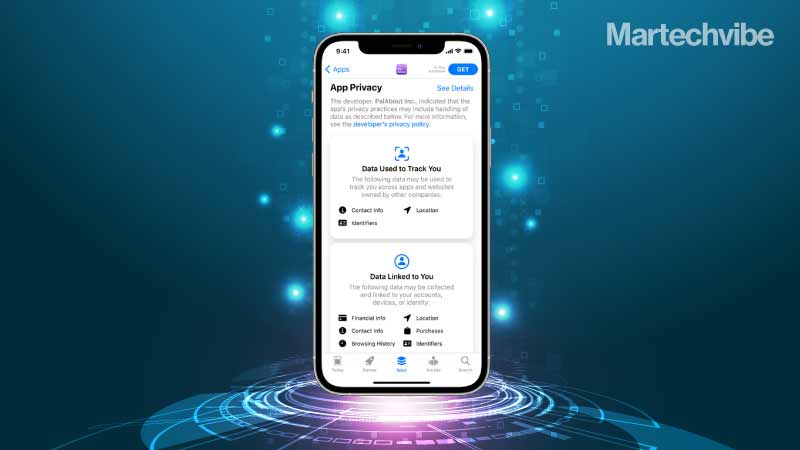Apple’s Privacy Regulations -- Not An Endgame
“Some things shouldn’t be shared. iPhone helps keep it that way. Privacy. That’s iPhone.” Last year, Apple made its purpose clear in this privacy-focused ad tagline. And with the latest iOS update being downloaded on millions of phones worldwide, brand advertisers are trying to keep calm. Last year, Apple rolled out the App Tracking Transparency […]
Topics

“Some things shouldn’t be shared. iPhone helps keep it that way. Privacy. That’s iPhone.” Last year, Apple made its purpose clear in this privacy-focused ad tagline. And with the latest iOS update being downloaded on millions of phones worldwide, brand advertisers are trying to keep calm.
Last year, Apple rolled out the App Tracking Transparency (ATT) framework, which required users to opt-in to tracking their activity by advertisers and developers within each app on an iPhone. Looking at it as the end of ID for Advertisers (IDFA), it wasn’t taken well by brand advertisers as they suddenly had less data to depend on. The marketing and advertising industries were on their toes with deeper privacy regulations, waiting for the other shoe to drop – iOS 15.
After months of beta testing, the release of the latest update did not have an iOS 14.5-calibre seismic effect. But it did reflect how platform providers are becoming de facto privacy regulators. Some of the latest privacy control features that could impact brand marketing initiatives and the ad tech ecosystem include how often applications access iPhone camera and contacts, the introduction of mail privacy protection, an opt-in VPN-like service that obfuscates internet browsing history, and a privacy dashboard where users can view how apps use their data.
Moreover, Apple users are presented with a pop-up box asking permission to offer personalised advertising. Although personalised advertising is enabled by default in the older versions, this move might have been a strategy for Apple to get back in the good books of users who had begun to scrutinise it after a complaint was lodged by France’s data protection watchdog, the CNIL. According to CNIL, Apple breached GDPR for tracking users in its apps without asking for consent.
Also Read: Will Apple’s Mail Privacy Policy Kill Email Marketing?
The impact
More Apple users would likely block IDFA. Definitive numbers are not available, but reports indicate that the majority of users have opted out of tracking. Although the numbers are not growing exponentially, the opt-out IDFA rate is still well over 60 per cent.
PubMatic reported the impact of IDFA policy changes by analysing a trillion programmatic bids, including impressions, eCPM data, and revenue. Many advertisers took the rushed decision to shift their programmatic advertising to Android. Statistics reveal that the share of mobile app spending on Android rose to 63 per cent and fell to 37 per cent on iOS.
The latest round of losing IP addresses, location signals, and barring marketing e-mails from using invisible pixels to collect information about the user is creating a bigger gap between Apple and advertisers. Historically, the IDFA allows companies like Facebook to infer data that powered its targeting engine. Facebook has braved an impact on its conversion reporting as well. Being unable to track conversions, in the same way, it is looking to implement a new system that derives data from system learning.
Also Read: A Token of Ad-appreciation
There is always another window
The IDFA phase out need not be the end of advertising for Apple users.
For every tracking ID that is lost, the signals are translated into programmatic bids that are no longer considered by advertisers. It creates CPM variances between the iPhone and Android users that do not match the two’s demographics and performance. If audience data is missing from iPhone impressions, it does not mean they have zero value, it is an indication for advertisers to create new valuations of these impressions.
According to experts, even though audience targeting on iPhones is limited today, it does not mean Apple users do not look at advertisements. With a pivoted focus, marketers and advertisers can find first-party data through other means. Consider the following. Finance app users might not opt for targeting via IDFA, but eCommerce and gaming application users might not mind choosing Allow. Using related eCommerce or gaming applications as their base ground, marketers are more likely to gather first-party data. After all, gaming apps offer the highest IDFA opt-in among all categories and often claim to have the highest performance rate.
Additionally, brand advertisers need to test different messaging by app category to help brands understand which apps are better for their brand messages than performance messages. They can gather enough insights from an individual app audience data. Experts strongly recommend extensive research to find app categories that can provide them with good synergy. Several app owners have detailed information about ad performance, demographics, and engagement data. It can be valuable for brand buyers looking for an alternative iPhone-based media plan for users who do not opt for IDFA.
Meanwhile, brand advertisers can now take bigger advantage of the artificially lower prices on iPhone impressions to test their new strategies. On the other hand, for the more targeted opportunities, the lack of IDFA opt-ins can be overcome with the right intelligence gathered from the application itself. The window is small, as the industry will soon become 100 per cent accustomed to Apple’s privacy-driven approach.
Even Facebook released a statement that included tips for advertisers. From allowing some time before analysing performance to following learning phase best practices to help the delivery system learn the best way to deliver ads.
In a statement, Facebook said, “Adding the Conversions API to your existing setup will help you optimise your ad campaigns, decrease cost per action and more accurately measure campaign outcomes while offering the same privacy protections we’ve put in place across our other Business Tools.”
The industry is still measuring the impact of ATT and the phasing out of IDFA, but it shouldn’t stop advertisers and developers from planning innovative strategies to work around the situation.





